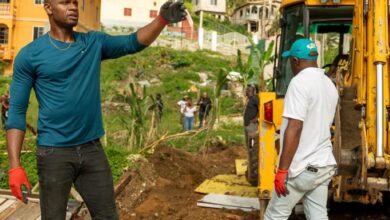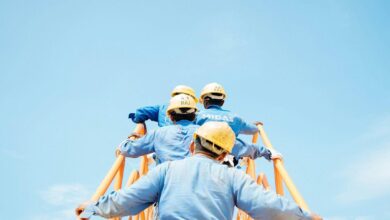The alarming situation of girls and teenagers in Latin America
Genital mutilation and early pregnancy are some of the problems that Latin American girls still face

In Latin America, many of the human rights of girls and teen girls are violated, causing a large-scale impact. In the document "Girl children and adolescents in Latin America and the Caribbean" is compiled all the status quo in which are the girls and adolescents living in part of the American continent.
Leer en español: ¡Alarmante! Esta es la situación de las niñas y adolescentes en Latinoamérica
It contains fundamental descriptive aspects, based on studies carried out by ECLAC, UNICEF and the UN, representing imperatively part of the exercise of the rights of these girls. One of these aspects that generates an important alert for the human development process in Latin America is early pregnancy, which the document describes as:
"In five of nine countries in Latin America, the incidence of pregnancy among women aged 15 and 19 who belong to indigenous peoples and live in rural areas exceeds 20%. According to these data, in Brazil and Panama, two of every three women aged 15 to 19 who live in rural areas and belong to indigenous peoples had been mothers in 2010."
This diagnosis is alarming for the countries of Latin America, because it implies walls in the development process of the girls. These pregnancies, in their majority, come from violent acts, like obligatory marriages, women trafficking, forced sexual relations, among other reasons. Thus, representing a violation in the right of sexual and reproductive health for girls.
The situation of girls and teen girls in the region
In Venezuela, as a result of an unstoppable political and economic crisis, facts that directly attack the human rights of girls and adolescents began to appear systematically. Mainly in rural areas and indigenous ethnic groups. These girls became collateral victims of illegal mining, intensifying at the moment when the Venezuelan government began the mining project in the Orinoco Arc.
According to the reports of Wanaaleru, the Organization of the Indigenous Women of the Amazon, there are complaints about the trafficking of indigenous girls and women through the existence of camps of the armed groups of the FARC and the ELN. These reports indicate that these groups are the main reference for trade and the sexual exploitation of them.
In Colombia, the issue of female genital mutilation is present in several communities of indigenous ethnic groups, the most named being the Embera community. Various Colombian institutions and organizations have been concerned about the passivity of the Colombian State regarding this issue.
You can also read: Be aware! These are the 4 most insecure cities for girls and young women
For this reason, since 2013, it has been called upon to eradicate the practice of female genital mutilation from the legal framework and as a priority issue in the National Plans, in accordance with the Equality Debt Report. In Peru, the face of inequality in the rights of girls has the following alarming figures, according to the aforementioned report:
- 76% of illiterate people are women
- 87% of victims of violence are women
- Women get 37% less income than men
- 30% of girls in rural areas can not access secondary school
The documentary La escuela del silencio promoted by UNICEF Peru and the Embassy of Canada, illustrates the factors that impede the school development of girls from rural areas in Peru. Cultural reasons have weight in these statistics. Parents have a preference in allowing their sons to continue high school, not risking that they can "return home with children," not being the same as girls.
The possibility of returning to their homes with children is reason to avoid that they can continue with their studies, this allows to assert that the weight of a son or daughter in Peru falls on the full responsibility of women.
In addition, girls and adolescents living in rural areas, in a general setting, are usually responsible for twice as many daily tasks, both paid work and domestic work. Thus, coercing the time required for their education in such a way. This directly affects the limitation of their abilities and the free exercise of their human rights.
LatinAmerican Post | Gabriela Rivas Colmenárez
Translated from "¡Alarmante! Esta es la situación de las niñas y adolescentes en Latinoamérica"
Listen this article





